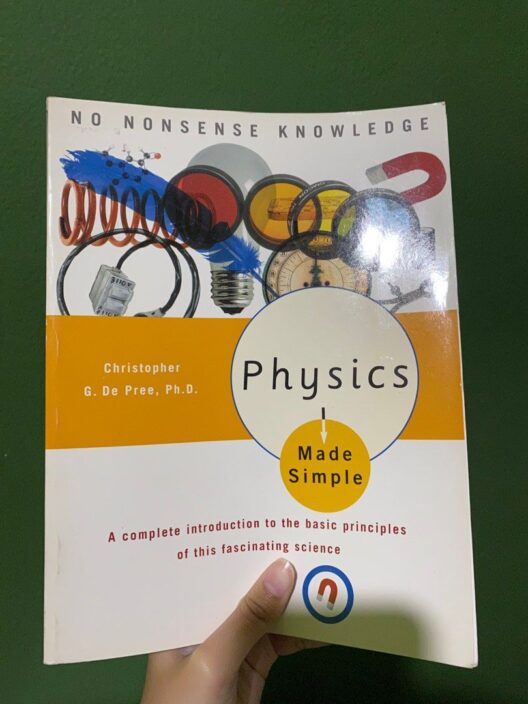Conserving mechanical energy in our daily lives is akin to tightening the reins on a wild stallion. Just as a skilled rider harnesses the power of the horse to achieve remarkable feats, we, too, can harness and optimize the mechanical energy at our disposal for greater efficiency. This guide delves into practical approaches to conserve mechanical energy across various spheres of everyday life. By adopting these physics hacks, we can illuminate the path toward a more sustainable future while reducing our carbon footprints.
The principle of mechanical energy conservation rests on the law of physics that states energy cannot be created or destroyed, only transformed. In essence, every time we engage with machines or physical systems, we tap into a reservoir of mechanical energy. This energy can emanate from varied sources—ranging from the kinetic energy of a swinging pendulum to the potential energy housed within a poised spring. However, what often emerges from our interactions with these energy systems is a disconcerting amount of waste. Thus, a conscientious approach to everyday mechanics is not merely beneficial, but essential.
One of the most straightforward manifestations of mechanical energy conservation can be seen in our transportation choices. Opting for bicycles or walking instead of relying on gasoline-powered vehicles can be equated to planting a seed that will flourish into a vast tree of environmental benefit. The energy expended through pedaling or walking is minimal when compared to that of an internal combustion engine, which burns fossil fuels and emits carbon dioxide. Furthermore, maintaining bicycles is typically less energy-intensive than maintaining cars, propagating an ethos of sustainability.
In the realm of home energy consumption, the concept of “energy vampires” lurks in our household appliances. These devices, often left in standby mode, draw energy without our explicit consent. Analogous to a leaky faucet, they waste resources without providing any tangible benefits. By unplugging devices that are not in use or employing smart power strips—designed to cut off power to devices in standby mode—we can effectively curtail unnecessary energy consumption. This not only conserves mechanical energy but also translates to cost savings on electricity bills.
Transitioning to more efficient appliances further amplifies mechanical energy conservation efforts. Appliances possessing the ENERGY STAR label or similar certifications demonstrate an increased efficiency in their operations. These devices often utilize advanced technologies that maximize the use of mechanical energy while minimizing waste. For example, energy-efficient refrigerators compress and expand refrigerants with higher efficiency, ensuring that the mechanics of their operation do not come at a steep environmental cost. Investing in high-efficiency appliances acts as a sophisticated lever, amplifying our efforts toward sustainability.
The integration of mechanical energy conservation extends beyond individual actions into the fabric of community and urban planning. The design of cities plays a pivotal role in determining energy consumption patterns. Implementing green spaces, optimizing public transportation, and promoting walkability are paramount. Urban planners deploying these strategies can cultivate environments that harness mechanical energy efficiently, transforming public transit into a heartbeat of connectivity—ultimately propelling a community toward a more sustainable trajectory.
Furthermore, the use of regenerative braking systems in electric and hybrid vehicles epitomizes the innovative applications of mechanical energy conservation. Regenerative braking captures the kinetic energy typically lost as heat during braking and converts it back into electricity. This phenomenon is akin to catching rainwater to nourish plants—efficient use of resources that would otherwise dissipate into the ether. By leveraging such technologies, we can exponentially reduce the overall energy requirements, thereby molding the future of transportation.
Exploring the significance of mechanical systems in various recreational activities elucidates additional avenues for energy conservation. For instance, engaging in activities like rock climbing or kayaking not only fosters physical health but also embodies an energy-efficient approach to recreation. The entire process of utilizing one’s body to navigate nature’s elements demonstrates the marvel of mechanical energy in action. Every upward pull or forward stroke generated by muscles optimizes mechanical energy without reliance on fossil fuels, carving a narrative of sustainability within leisure pursuits.
Education around mechanical energy, energy efficiency, and sustainable practices should surface in our formal and informal learning environments. Encouraging discussions, workshops, or even simple family conversations about energy usage—and where we can improve—can enhance awareness. Implementing physics-based educational programs can also cultivate a culture of innovation, inspiring future generations to invent solutions to enhance mechanical energy conservation as innovation becomes second nature.
As we weave this tapestry of energy conservation through diverse practices and mindsets, the essence of harmonizing human activity with mechanical efficiency surfaces. Integrating these physics hacks into our daily routines translates not only to personal benefits but also abates the threats posed by climate change. Through intentional actions and innovative approaches, we can shift the paradigm toward a sustainable future where mechanical energy is conserved with grace, and where our endeavors minimize environmental impact.
Ultimately, the journey toward mechanical energy conservation beckons each of us to take part in a collective mission. It encourages us to contemplate our choices, harnessing the natural world’s mechanics to orchestrate a thriving planet. By implementing the strategies outlined, we not only empower ourselves but also safeguard our shared environment for generations to come.







